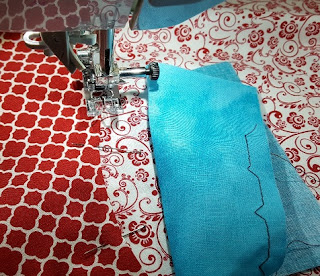Treasures of the Sewing Room
The Double Wedding Ring, threads from raw edges tangling in
the scrap of sole fabric for quilted slippers...
Moonglow neatly folded...
Sedona Through the Trees, forever wanting its final Stars,
Those sad and lonely earthbound UFOs
I used to fantasize that as long as I had a quilt to finish, my life would continue. Nope, can't die tomorrow - have to get that border on. Then the pile grew, and my thoughts changed to: I hope when I die whoever finds these will finish them. My treasures haunted me with their pointing fingers - damning me and my ADD to a hell of scraps and tangles threads.
UFOs served a purpose in their time - providing a means of learning and creative expression. the real treasure is the person who makes them and the things she has learned along the way. Therapy through rough times.
The work we did on these UFOs are the stepping stones in our education. Sometimes, life with all its chaotic demands intervenes, sometimes we just reach a point where the project isn't serving, or our skills aren't compatible with the demands of the project, and we need to leave it and "practice" our craft on something simpler, till we can go back to the project and work joyfully - not frustrated and self castigating.
I thought that when I retired I would have SOOO MUCH time! Okay, at
times I never expected to be able to retire - sometimes life forces us
into paths we wouldn't think of taking. But this thing about
TIME...There still isn't enough hours in the day to do everything I want
to do - to try - to experiment with...(this is still after I gave up
being a pit crew member for a local NASCAR team, even if all I did was
sew the patches on the clothing). The point is I have to make every
day, every hour COUNT for something. It isn't enough to make a quilt for
the sake of having a quilt. I give most of them away, anyway. If a
quilt project doesn't serve a purpose such as teaching me something or
honing a skill - I don't have time for it!























